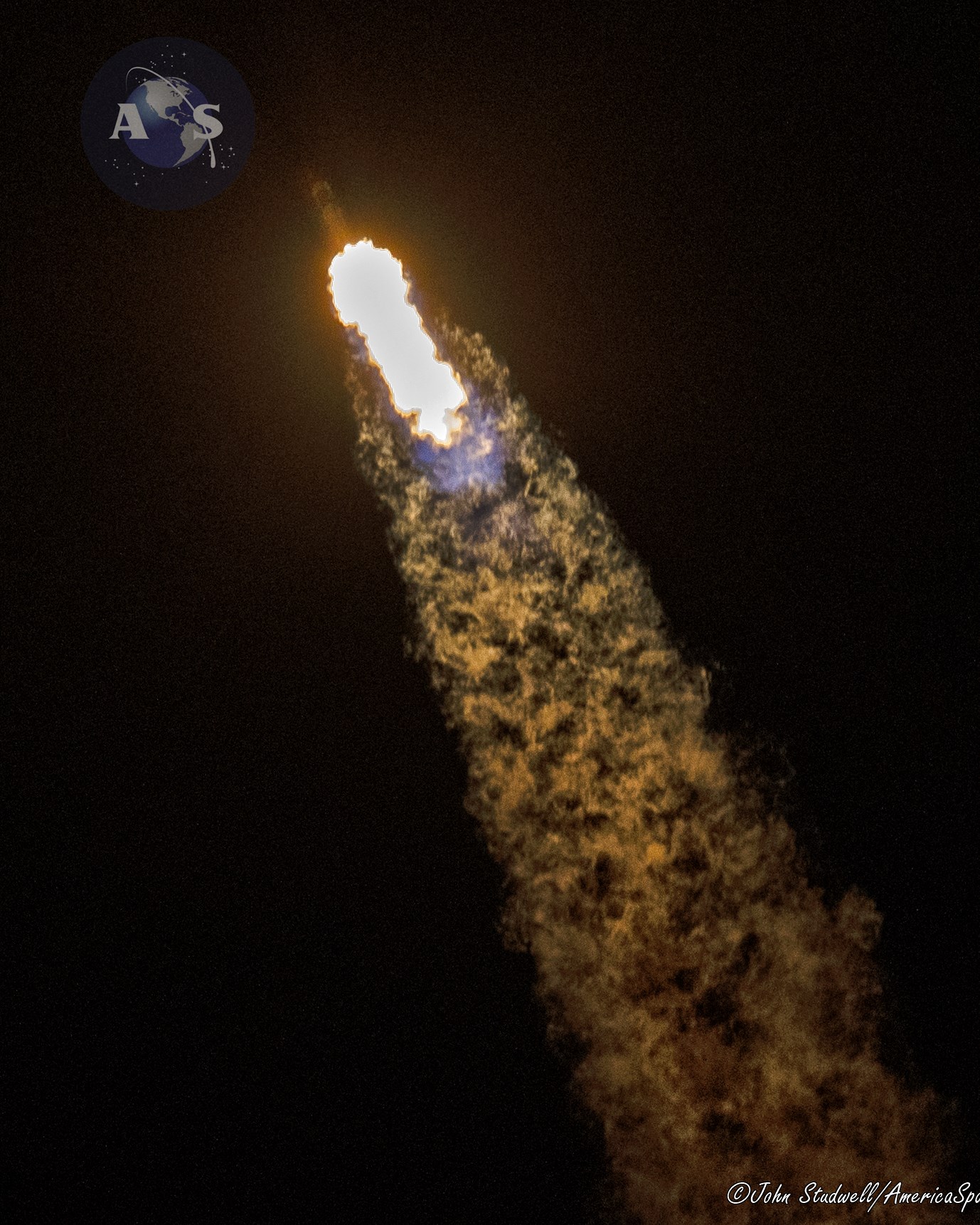
For only the second time, SpaceX has launched a third batch of Starlinks in a single month, following Sunday’s rousing 6:01 a.m. EDT liftoff of a previously-flown Falcon 9 booster from historic Pad 39A at the Kennedy Space Center (KSC) in Florida. It was the eighth mission of 2021 for the Hawthorne, Calif.-headquartered launch services provider, bringing to 370 the total number of these flat-packed internet communications satellites placed into orbit since the start of the year. The B1051 first-stage core, making a record-breaking ninth launch, has now lifted more Starlinks than any other Falcon 9.
With 23 Starlink missions—a total of 1,323 satellites—having been orbited since May 2019, SpaceX is no stranger to flying twice in a single calendar month. On no fewer than five occasions between January 2020 and last month, batches of Starlinks were flown on two missions within a single month of each other.
Flying three times, though, has been much rarer. Last October, three veteran boosters lofted 180 Starlinks within a span of only 18 days. And with this morning’s launch, that achievement has now been narrowed to just ten days in the first half of this month, with life-leading B1049 having lifted 60 Starlinks on 4 March and Doug Hurley and Bob Behnken’s old booster B1058 carrying another threescore of these small, flat-packed satellites uphill last Thursday. It also marked two launches from historic Pad 39A in only ten days, breaking the 12-day interval between a pair of Starlink missions last October.

Weather conditions for Sunday morning’s opening launch attempt were predicted to be around 90-percent favorable, according to the 45th Weather Squadron at Patrick Space Force Base in its L-3 briefing, issued Thursday.
“Surface high pressure that has been dominant in the Space Coast’s weather the past several days is expected to begin breaking down during the latter half of the weekend as an area of low pressure develops over the Central Plains,” it was noted. “The associated cold front will move across the Lower Mississippi Valley and into the Southeastern U.S. by Monday.

“Winds on Sunday morning will be relatively light and it is possible there will be a few stray showers over the water that move inland and quickly dissipate. The primary concern will be the Cumulus Cloud Rule.” The 45th added that conditions would deteriorate slightly to 80-percent favorable in the event of a scrub to Monday, with an increased pressure gradient expected to produce stronger winds and greater low-level moisture.”
Rising into the pre-dawn gloom only three days after B1058’s mission last Thursday, this morning’s flight marked the shortest interval between any two Falcon 9 launches from the Space Coast. Although a pair of missions back in December 2018 flew from the Cape and Vandenberg Air Force Base, Calif., within 48 hours of each other, the narrowest launch-to-launch gap from Florida was previously three days and 13 hours, set by a pair of flights last summer.

Efforts on two prior occasions—once last summer and more recently just last month—to fly pairs of missions only hours apart came ultimately to nothing, due in part to the ever-present machinations of Mother Nature.
Powering the 230-foot-tall (70-meter) Falcon 9 stack uphill for today’s flight was the most flight-experienced core in SpaceX’s fleet: B1051, which became the first booster to log a ninth mission. First flown in March 2019 to deliver an unpiloted Crew Dragon vehicle to the International Space Station (ISS) for the critical Demo-1 mission in support of the Commercial Crew Program, she went on to lift Canada’s three-spacecraft Radarsat Constellation Mission (RCM) the following June.

Those first two missions saw B1051 fly both from Pad 39A at the Kennedy Space Center (KSC) in Florida and from Space Launch Complex (SLC)-4E at Vandenberg Air Force Base, Calif.
Following her stint on the West Coast, she returned east to fly no less than six missions between January 2020 and January 2021, delivering a grand total of 297 Starlinks and SiriusXM’s SXM-7 high-powered radio broadcasting satellite aloft. In doing so, B1051 became the first Falcon 9 booster to launch both four times and five times within a single calendar year.

She also earned a plaudits on her April 2020 Starlink mission by eclipsing the United Launch Alliance (ULA) Atlas V as the most-flown operational U.S. launch vehicle. And in January 2021, she set a new record—now beaten—for the shortest launch-to-launch interval of a single orbital-class booster.
Liftoff proceeded with characteristic perfection as B1051’s nine Merlin 1D+ first-stage engines burned furiously with an estimated 1.5 million pounds (680,000 kg) of thrust for the first 2.5 minutes of flight. The core was then jettisoned and, guided by its suite of hypersonic grid-fins, deployable landing legs and Entry and Landing Burns, alighted smoothly on the deck of “Of Course I Still Love You”, a little over 8.5 minutes after launch. Meanwhile, the second stage, powered by a single Merlin 1D+ Vacuum engine, continued the push uphill to insert the 60 Starlinks into orbit.






5 Comments
5 Pings & Trackbacks
Pingback:Falcon 9 Marks 4th Launch in Four Months With Midnight Starlink Mission « AmericaSpace
Pingback:Record-Tying Falcon 9 Veteran Lofts 25th Batch of Starlink Satellites « AmericaSpace
Pingback:Record-Tying Falcon 9 Veteran Lofts 25th Batch of Starlink Satellites
Pingback:Historic Cape Launch Pad Observes 125th Launch With First 10x-Flown Falcon 9 « AmericaSpace
Pingback:Historic Cape Launch Pad Observes 125th Launch With First 10x-Flown Falcon 9